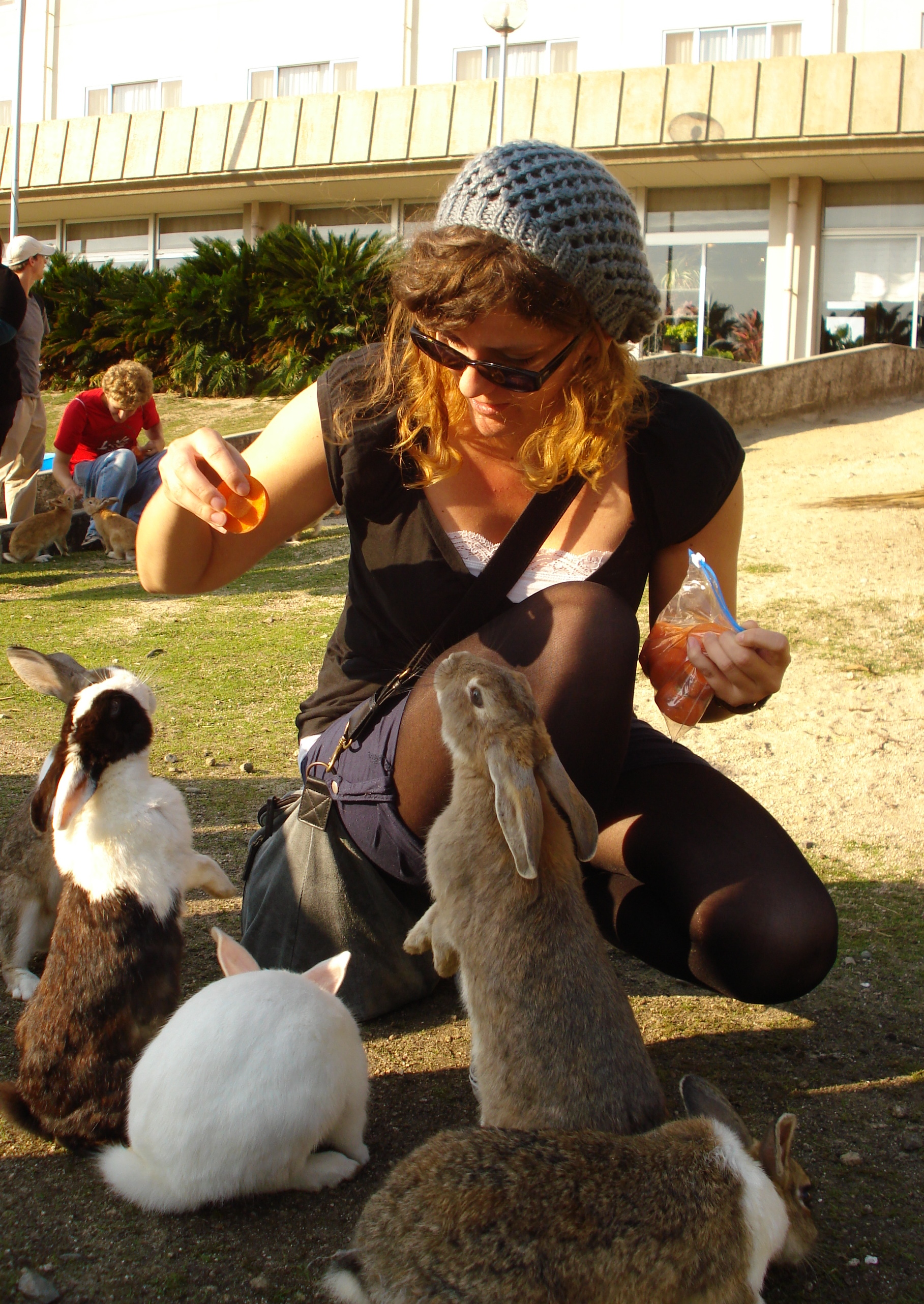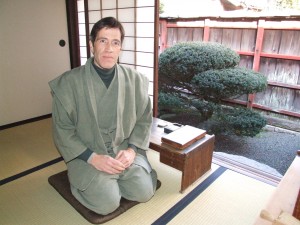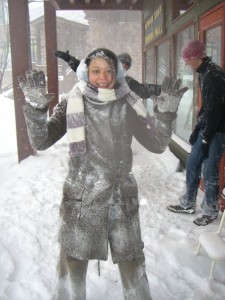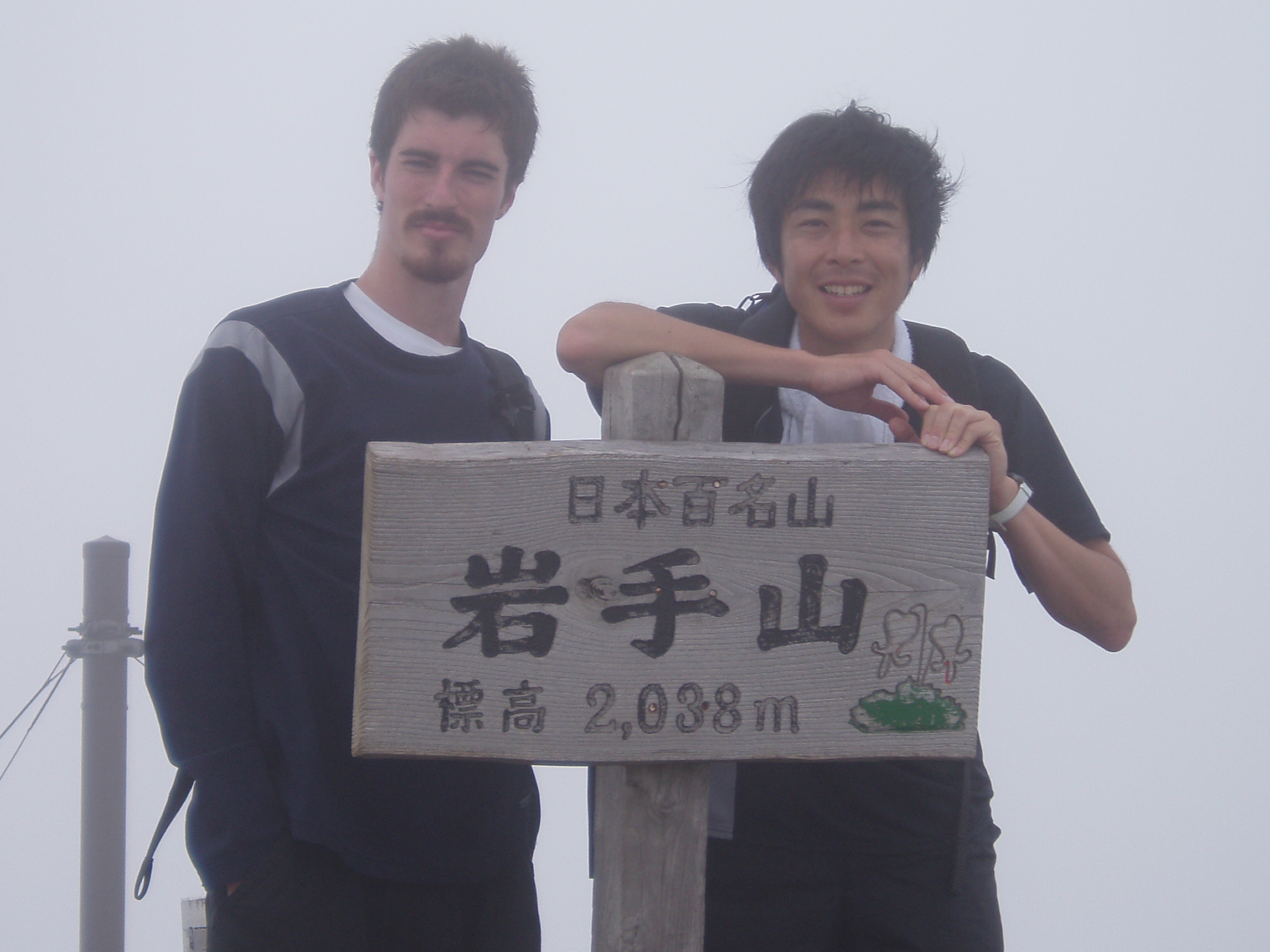JET alum’s martial arts non-profit seeks to connect with Tohoku dojos for volunteering
Posted by JET alum Jennifer Leigh-Gould (Miyagi-ken, Shibata-machi, 2001-04) to the Sendai Earthquake Friends and Family Facebook group:
Out of the Dojo, Into the World™ is a newly formed non-profit community of martial artists who are very interested in helping with disaster relief and community re-building in Tohoku. I wonder if anyone can connect us with local dojos in the area and/or service projects in need of volunteers. In the meantime, please visit and like our page. We’re just starting out and eager to connect with the international community in any way that we can. (I am a former JET 2001-2004 – in Shibata Machi, Miyagi Ken).
https://www.facebook.com/outofthedojointotheworld
CLAIR Magazine “JET Plaza” series: Matthew Fuller (Aichi)
Each month, current and former JET participants are featured in the “JET Plaza” section of the CLAIR Forum magazine. The December 2011 edition includes an article by JET alumn Matthew Fuller. Posted by Celine Castex (Chiba-ken, 2006-11), currently programme coordinator at CLAIR Tokyo.
***********
旧友との再会2010_1.jpg)
“Often, you are the only foreigner that people will ever get to know, and so you are truly an Ambassador to Japan from the outside world – and that’s a powerful platform.”
Matthew Fuller (Aichi-ken, Toyota-shi, 1997-99) is originally from Austin, Texas. He came to Japan on the JET Programme and lived and taught in the rural village of Shimoyama which later merged to be part of Toyota City in Aichi Prefecture. After a master’s degree in Public Affairs from the LBJ School of the University of Texas, he joined the US Department of State. Matthew Gardner Fuller is currently the special assistant to the US Ambassador to Japan John V. Roos in Tokyo where he has served since 2009.
What was one the most positive aspects of your experience on the JET Programme?
One of the best things for me was the lifelong connections I made with the people in my community. What started out as sharing an occasional drink with some people in Shimoyama, ended up growing into long-term friendships. In fact, one of the friends I made during my time on JET has continued to keep in touch with me by calling every month to chat. He even continued to check in on me while I was on assignment in Baghdad. It’s these connections that really made my time on JET special. And these ongoing connections have provided numerous opportunities to go back and visit Shimoyama. For example, I was recently invited to and attended the wedding of a former student. I also had the chance to accompany Ambassador Roos to Shimoyama to help provide a firsthand look at the long-lasting grassroots exchange that the JET Programme is capable of fostering. Read More
Kyodo News “Rural JET alumni” series: Marion Lagan (Okayama)
News agency Kyodo News has recently been publishing monthly articles written by JET alumni who were appointed in rural areas of Japan, as part of promotion for the JET Programme. Below is the English version of the column from January 2013. Posted by Celine Castex (Chiba-ken, 2006-11), currently programme coordinator at CLAIR Tokyo.
***********

I hope I will have another chance to spend time there so, to the question “How is it to live in Tokyo?” I can finally answer “It’s good, but not as good as it was living in Okayama.”
Marion Lagan (Okayama-ken, Soja-shi, 2007-09) was born in the Southwest of France, then lived in many different places throughout France until she graduated high school. She moved to Paris where she studied French literature and Japanese. Once she got her teaching certificate, she applied to the JET Programme in order to get a first experience working abroad as well as furthering her knowledge of Japan and its culture. She spent two years in Okayama Prefecture teaching French and English and eating peaches. Once back in France, she got an MBA from HEC Paris. She is now working for L’Oréal as brand manager. In her spare time, she likes watching movies, making movies, reading novels as well as essays and planning her next trip to Japan.
All roads lead to Japan
When people learn I’ve spent two years in Japan, their first question always is “So, how is it to live in Tokyo ?” and the reaction I get when I tell them I don’t know since I lived in Okayama is, at best “What, you mean Hiroshima ?” or at worst “Is that even in Japan ?”. Yes, Okayama is in Japan. To me it is Japan.
From 2007 to 2009, I taught French and English to high school students whose age ranged from 15 to 19 year-old. I was a teacher in France and JET was a great opportunity to experience another lifestyle as well as work-style. I saw –and helped, I hope, students grow up and they definitely made me grow up too. It has been three years now I have left Japan and the more important memories seems to have sharpened so I will recount the ones that impressed me the most. Read More
CLAIR Magazine “JET Plaza” series: Austin Moore (Yamaguchi)
Each month, current and former JET participants are featured in the “JET Plaza” section of the CLAIR Forum magazine. The January 2013 edition includes an article by Austin Moore, a former Monbusho English Fellow (MEF), the forerunner to the JET Programme. Posted by Celine Castex (Chiba-ken, 2006-11), currently programme coordinator at CLAIR Tokyo.
***********

“Sometimes I joke that back when I began what quite unexpectedly is turning out to be a lifetime in Japan, the local men carried swords and wore topknots.”
Austin Moore was born and brought up in a house that was built in 1830 in a small town of Massachusetts. After graduating from Syracuse University in 1984, he came to Japan to work as a member of the Monbusho English Fellow Programme in Yamaguchi Prefecture. Three years later, he moved to Tokyo to join the organization which is today known as CLAIR. Austin has been working for the Japan Intercultural Academy of Municipalities in Shiga Prefecture for the past twenty years. He is also the head of the Historic Preservation Society of Hino town, where he lives in a house that dates back to Edo period.
Adoption Of and By Japan
Sometimes I joke that back when I began what quite unexpectedly is turning out to be a lifetime in Japan, the local men carried swords and wore topknots. While that is more than a small exaggeration, the changes in Japanese society that I have witnessed during these three decades are nearly as significant.
In 1984, immediately after concluding my studies at Eisenhower College and Syracuse University, I was accepted into the Monbusho English Fellow (MEF) Program (preceding JET and run exclusively by the Ministry of Education) and spent almost three years in Yamaguchi Prefecture – the philosophical birthplace of modern-day Japan. There, for the first year, I had the distinction of being the only American employed by the prefectural education board and, as such, visited most every public high school in the prefecture, as well as numerous junior high schools.
It was the very beginning of July when I arrived in Yamaguchi. My supervisor was a kind man who spoke extremely good English – the only one in the office who did. But a week into life as an MEF, my supervisor, my ‘life-support system’, left for a month-long training seminar at Tsukuba University. And so it was that I promptly learned to breathe on my own. Read More
Kyodo News “Rural JET alumni” series: Rashaad Jorden (Yamagata)
News agency Kyodo News has recently been publishing monthly articles written by JET alumni who were appointed in rural areas of Japan, as part of promotion for the JET Programme. Below is the English version of the column from December 2012. Posted by Celine Castex (Chiba-ken, 2006-11), currently programme coordinator at CLAIR Tokyo.
***********
Born in Japan, Rashaad Jorden (Yamagata-ken, Tsuruoka-shi, 2008-10) has lived a bit of a nomadic life, having lived in Virginia, New Jersey, and several times in France and Japan. He attended Coppin State University (Baltimore, Maryland) and graduated with a degree in English. He came back to Japan on the JET Programme and worked for two years in Yamagata Prefecture, in Haguro, a village that merged into Tsuruoka. Currently, he conducts English classes for Japanese adults at an online eikaiwa school named Hello English and is in the job hunt.
Same Country, New Experiences
I was born on a naval base in Yokosuka, where I spent my first 18 months. After graduating from university, I spent a year working at an eikaiwa school in Yokohama.
However, Japan was pretty much a mystery to me. My co-workers were all Westerners, so I was obviously missing out on a true Japanese work environment. If I went somewhere other than Shibuya on an off day, it was a miracle. And despite taking Japanese classes every Wednesday morning for several months, I struggled mightily in the language.
Needless to say, I had not gotten the most out of Japan during my year in Yokohama. But there was definitely an itch to discover more of the country and its culture. So after working as an assistant English teacher in France, the decision was simple: I was applying for the JET Programme.
In late March 2008, I learned Read More
JETAA British Columbia Newsletter – January 2013
 The latest issue of the JETAABC Newsletter is now available. The January issue includes a poignant article on Rikuzentakata by former Alison Dacia Brown (Iwate-ken, Rikuzentakata-shi, 2005-08) as well as an article on Photohoku, hockey in Japan, and other JET-relevant topics. JETAA BC is also one of the few remaining chapters to publish a print-layout newsletter, and they do a great job at it.
The latest issue of the JETAABC Newsletter is now available. The January issue includes a poignant article on Rikuzentakata by former Alison Dacia Brown (Iwate-ken, Rikuzentakata-shi, 2005-08) as well as an article on Photohoku, hockey in Japan, and other JET-relevant topics. JETAA BC is also one of the few remaining chapters to publish a print-layout newsletter, and they do a great job at it.
- Online Magazine Version: http://issuu.com/jetaabc/docs/newsletterv17n3/8
Mochi Making
Posted by Benjamin Martin, a 5th year JET in Okinawa, publisher of the blog MoreThingsJapanese.com and author of the YA fantasy novel Samurai Awakening (Tuttle).
It’s the New Year, and in Japan that means its time for mochi! Mochi is a Japanese treat made from pounded rice. While mochi is now eaten throughout the year, it’s a favorite tradition during the New Year’s season. It’s generally served as a stuffed dumpling with fillings varying by region, taste, and tradition. On the left is a sweet bean filled mochi served on a getto leaf in Okinawa.
More on Mochi
In Japan, a lot of events have their origins in times when most villager’s diets consisted of very simple food. A long time ago, when rice was used as a currency, most Japanese only got to eat rice on special occasions. A condensed rice treat then, would have more calories, and be even more special. Eating mochi on new years “to ensure health in the new year” was almost literal. It was like a version of ancient Japanese powerbar. One Japanese story, Momotaro, tells of the young peach boy offering rice based treats to ensure help in a quest. Such legends show the how the traditions came to be. Today mochi is still an import part of New Year’s celebrations. It forms the centerpiece for the offering at many shrines.
Mochi takes time, energy, and to really do it right, community. All of these things tie into most Japanese celebrations. The act of creating and eating mochi brings people together for a shared experience, while also acting as an offering for the town’s, family’s, or individual’s ancestors.
Unfortunately, mochi has a dark side as well. Every year, several people are hospitalized due to their consumption of the sticky treat and often a few die. Be careful!
To learn about how mochi is made visit MoreThingsJapanese.com
As a special thank you to all my readers, followers, and friends I have released the first of the Jitsugen Samurai Diaries as a free ebook. Checkout The Tanner’s Daughter on Smashwords.
Akita Global Network Newsletter – Vol 6
Thanks to Akita Prefecture for sending out the latest volume of its Akita Global Network Newsletter:
We’ve just published the latest Akita Global Network newsletter,vol.6. You can read here:
http://www.pref.akita.lg.jp/www/genre/0000000000000/1286429964066/index.html
Please share it with your family and friends. Have a nice holidays!
秋田県企画振興部学術国際局国際課
Akita Prefectural Government
主事 齋藤 小夜里 Sayori SAITO
********************
あきたファンどっとこむ!http://www.akitafan.com/
Local Industrial Festival Reveals a Wealth of Culture
Posted by Benjamin Martin, a 5th year JET in Okinawa, publisher of the blog MoreThingsJapanese.com and author of the YA fantasy novel Samurai Awakening (Tuttle).
The industrial Fair, or sangyo matsuri in Japanese, is a fixture in the annual event calendar on my island. From the English translation you might think of cars, heavy manufacturing, and other well-known industry. In Japan, though, many products are made by very small local companies rather than in large factories. Even when big factories are necessary, there are often many small shops acting as suppliers. Taken to a further level, small rural communities without those major industries often have a vibrant industrial community supporting local needs. You might be surprised to learn about all the things going on around you in small local Japan.
Recently, our island had its yearly sangyo matsuri, and event designed to inform locals about the various products made on Kumejima and also to sell those products. One of the local kaizen (community) centers was taken over by scores of tables and activities for everyone to enjoy.
Checkout MoreThingsJapanese.com for more photos and a video on the Agricultural, Oceanic, and Cultural sights at this unique event.
Tohoku Holiday Greeting Project
Thanks to JETAA USA Board of Advisors member Jessyca Wilcox for sharing this information:
Tohoku Holiday Greeting Project
American students can send holiday greetings to students in the Tohoku area of Japan devastated by the 3/11/2011 disaster. Cards, which can be written in English, will be distributed beginning December 17. Postage for a regular-size envelope is $1.05.
Send cards to:
Boys and Girls
c/o Mr. Choji Sugihara
Shoshi High School
14-18 Nakamachi, Koriyama-shi
Fukushima-ken, 963-8004
JAPAN.
Kyodo News “Rural JET alumni” series: Charlotte Green (Hokkaidō)
News agency Kyodo News has recently been publishing monthly articles written by JET alumni who were appointed in rural areas of Japan, as part of promotion for the JET Programme. Below is the English version of the column from November 2012. Posted by Celine Castex (Chiba, 2006-11), currently programme coordinator at CLAIR Tokyo.
***********

“The subtlest things we observe in children are often the most significant. Of all the lessons I learned from JET, this is perhaps the one I have carried with me the furthest.”
Charlotte Green (Hokkaidō, Biei-chō, 2006-08), is from St. Helens, Merseyside, in the U.K. After studying abroad in Tokyo for one year, she graduated from university with a degree in Japanese and Politics in 2006. The same year, she came back to Japan on the JET Programme and spent two years in the lovely town of Biei. Now back in England, Charlotte is currently studying for a post-graduate diploma in Psychoanalytic Observational Studies and working as a play worker with Barnardo’s.
Looking Back with Letters
In a childishly-decorated shoe box at the back of my wardrobe is a collection of items I keep from interesting times in my life. A lot of it was generated from my time as an Assistant Language Teacher (ALT) on the JET programme. I spent two years teaching in Biei, a rural town in Hokkaido with a population of 12,000 people. Like most other ALTs, I arrived with only an anachronistic picture of the place in my mind. I worked at three different junior high schools, the smallest of which had twelve students and lay amidst rice paddies frequented by storks and warblers, and hills of birch trees that, in the autumn, turned a spectacular yellow. Snow fell thick and fast for six months of the year. The landscape was a constant source of intrigue. I can remember walking home from work one afternoon and hearing Read More
JapanLocal: Tottori JET Anthony Lieven’s latest Misasa video – November 2012
Tottori JET Anthony Lieven has been creating new videos each month as part of a project that introduces his JET town of Misasa to the world. With Anthony’s permission, here is his latest video:
Misasa Monthly Video 08 (November 2012) – Mount Mitoku Sanbutsuji’s Fire Festival from Red T-Shirt Guy on Vimeo.
Rikuzentakata now a hit on Facebook
Thanks to Vancouver-based JET alum Alison Dacia Brown (Iwate-ken, Rikuzentakata-shi, 2005-08) for posting about this to Facebook. From a JET perspective, it seems to offer a communications model for Japanese local governments in which perhaps JETs and JET alumni could play a helpful role:
Update: Here’s the Rikuzentakata Facebook Page
Saturday, Nov. 24, 2012
Tsunami-hit city a hit on Facebook
Kyodo
MORIOKA, Iwate Pref. — The coastal city of Rikuzentakata, Iwate Prefecture, devastated by last year’s earthquake and tsunami, has gotten global attention thanks to its use of Facebook.
In July, the city set up an official page in both Japanese and English on Facebook, the first municipality to do so among those on the northeast coast that bore the full brunt of the March 2011 catastrophe.
Since then, officials have been updating the page to display and keep the world updated on the reconstruction process, an unusual move for a municipal government. The posts, mostly written in Japanese, include articles on Rikuzentakata from Japan and around the world, advisories on earthquakes and floods, and the mayor’s participation at a local festival.
When Rikuzentakata’s officials made a fundraising page in English to help preserve the city’s famed “miracle pine tree,” donations came in from around the world. Read More
Now in Paperback: “For Fukui’s Sake: Two years in Rural Japan” by JET alum Sam Baldwin
|
Kyodo News “Rural JET alum” series: Hughar Hartzenberg (Iwate)
News agency Kyodo News has recently been publishing monthly articles written by JET alumni who were appointed in rural areas of Japan, as part of promotion for the JET Programme. Below is the column from October 2012. (Special thanks to JET alum Celine Castex, currently a CLAIR Tokyo staff member, for alerting JETwit to this series and making these available.)
**********
 Hughar Hartzenberg (Iwate-ken, Ninohe-shi, 2006-09) was born and raised in South Africa, where he received a degree in Theology in 2005. After that he came to Japan on the JET Programme and continued as a participant for three years in Iwate Prefecture (2006-2009). During this time he met and married his wife, who was another JET participant and with whom he is currently living in Kanagawa Prefecture. Hughar is working as a wedding minister in Tokyo and is also the director of the NPO Japan Building Africa which he founded in 2011.
Hughar Hartzenberg (Iwate-ken, Ninohe-shi, 2006-09) was born and raised in South Africa, where he received a degree in Theology in 2005. After that he came to Japan on the JET Programme and continued as a participant for three years in Iwate Prefecture (2006-2009). During this time he met and married his wife, who was another JET participant and with whom he is currently living in Kanagawa Prefecture. Hughar is working as a wedding minister in Tokyo and is also the director of the NPO Japan Building Africa which he founded in 2011.
JET and beyond
It has been said that we should be careful of the actions we take as young men and woman, for those actions will shape the adults we will become. Reflecting on my own actions over the last seven years, and the experiences that these actions have led to, I can attest to this saying being the truth. One action that changed the course of my life was the decision to apply for something that is called the Japan Exchange and Teaching Programme, or “JET Programme” in short. This one decision literally changed my world. Read More






